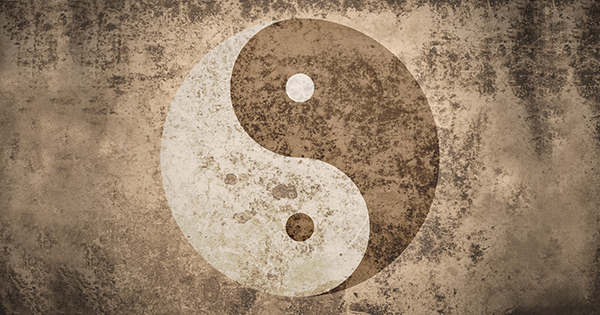Many martial art styles, as well as sports, primarily use speed to generate force (“F”), and therefore emphasize the “a” (acceleration) component of the F=ma equation (Newton’s second law of motion). While acceleration is also used in Taijiquan (太極拳), there is an emphasis on using a unified (whole-body) structure, therefore emphasizing the “m” (mass) component in F=ma.
Our goal should be to maximize the effective mass by recruiting the entire body into our techniques. This unified body is reflected in the saying from the Taijiquan classics that “if one part moves, every part moves, and if one part is still, every part is still.”
While someone can be very strong or very fast, if they are using primarily their arm to generate their force then they are mainly using the mass of their arm rather than the mass of their entire body. Training allows one to increase the effective mass (and the corresponding force that is produced) by recruiting more of the body into the techniques.
In martial arts, force primarily from acceleration can be illustrated by the spinning back fist, which combines spinning the body with whipping the arm. Force primarily from structure/mass can be illustrated by the “one-inch punch” (寸勁 cun jin) which combines the mass of various body parts (whole-body power) to generate the force with minimal body movement.
Taijiquan primarily practices to control training partners or opponents from mid-range contact, rather than attacking from non-contact like striking arts typically do. When not in contact, many things can be done to help generate acceleration (therefore increasing the force of ones strike) that cannot be done against resistance as is often encountered during contact. As long as one has good alignment upon contact, weak alignments while accelerating may not be problematic.
One could say that Taijiquan practices to be properly aligned against resistance even while moving and even when the direction(s) of the resistance changes. This results in a unified structure that is ready to maximize ones mass at all times. Acceleration is primarily generated by moving the unified structure (mass) by shifting ones weight (or stepping), and/or by rotating to advance one side of the body, without compromising (or breaking) the unified structure.
Acceleration used to generate force can be illustrated by sports like baseball and American football where movements of the legs and body are added to the motion of the arm (a “kinetic chain”), which is then transmitted to the ball, generating the ball’s speed when released. Here the weight of the ball produces only a slight resistance to the thrower’s arm.
A heavier ball is difficult to throw in the same manner, which is why the mechanics of a shot put throw are different from throwing a baseball. Shot put uses acceleration generated by spinning the entire body around while holding the shot at a fixed location at the athlete’s neck, and finishing with pushing the ball away.
Whereas a baseball player’s throwing motion can go behind the torso due to the relative lightness of the ball, a shot is too heavy to allow this same arm motion, which would likely strain or injure the thrower, and the shot would travel a shorter distance, than one thrown conventionally.
Each joint has a peak angle where it is strongest, and the shoulder is not strong when the arm is behind the torso. But the minimal weight of a baseball allows one to swing the arm through the weak angles in order to increase the distance that the arm accelerates through, and allows greater acceleration to be transmitted to the ball. The following article includes information on peak joint angles, optimal muscle fiber length, etc.:
https://www.strengthandconditioningresearch.com/perspectives/stronger-joint-angles/
Resistance from a partner/opponent’s contact can often easily disrupt acceleration, especially when joint angles are weak. For example, if a quarterback’s arm is touched during the throwing motion, the arm’s motion is easily disrupted and the throw is easily affected. This is what can happen to potential martial attacks that rely on acceleration to generate force; when one is in contact with a partner/opponent the attack can be “jammed” or “jostled” which prevents the power/force from being able to build or to be effectively released.
When in contact with an opponent, Taijiquan can use techniques like covering (敷 fu), blanketing (盖 gai) and intercepting (對 dui) to disrupt the opponent’s ability to accelerate, and therefore inhibit their ability to generate force.
Another potential problem with generating force by relying on acceleration is that the resulting momentum is often difficult to change. After force using momentum is issued, it can be countered by “swallowing” (吞 tun), a type of “leading (牽 qian) into emptiness (空 kong).” With Taijiquan we want to maintain our changeability even when attacking, and therefore we try to generate power in a manner that reduces continuing momentum.
The four terms above (fu, gai, dui and tun) are the “Four Word Secret Formula” (四字秘訣 Si Zi Mi Jue) given by Wu Yuxiang (武禹襄). Zhang Yun (张云) gives a translation with explanations and examples of the four words in the following article:
http://www.ycgf.org/Articles/Qi-In_TJQ/Qi-in-TJQ1.html

Leave a Reply